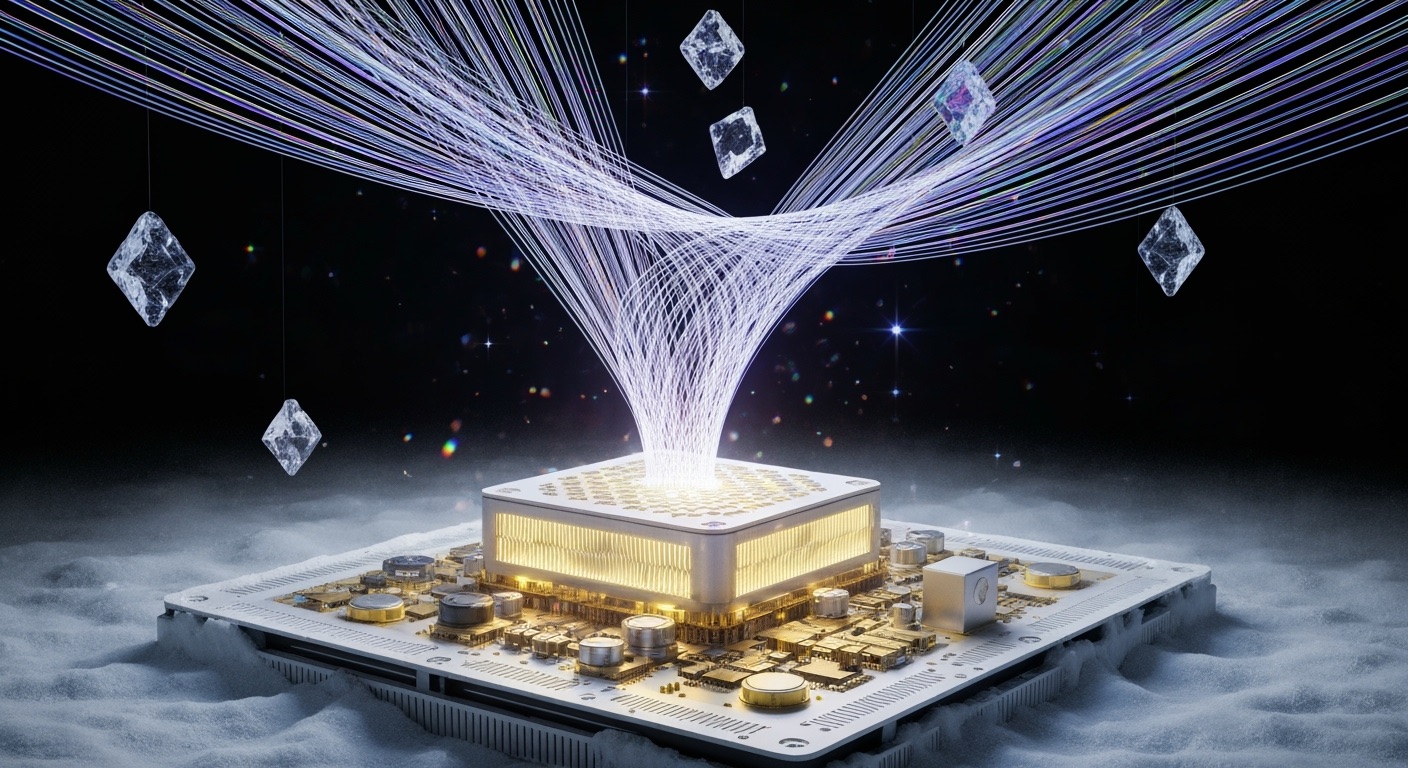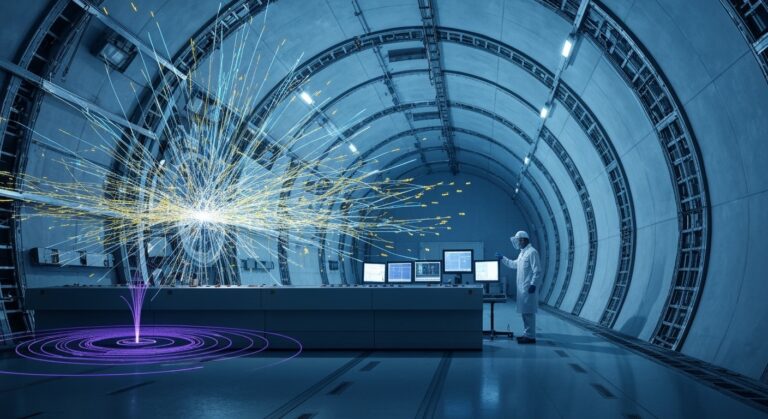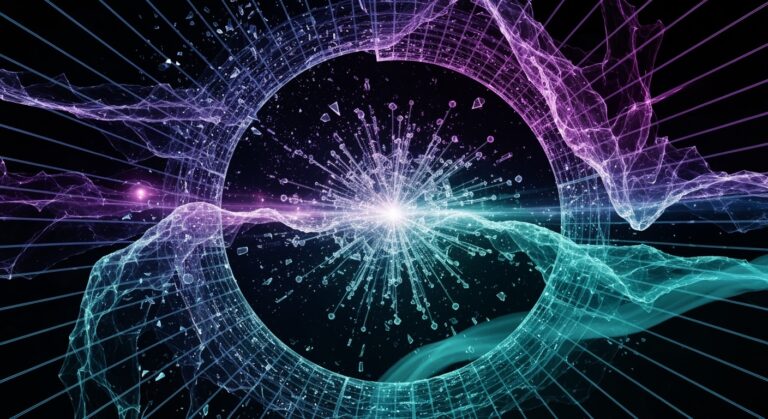In A Nutshell
- Google’s quantum processor simulated dynamic “strings” resembling quantum chromodynamics behavior, offering insights into fundamental particle interactions.
- Experiment demonstrated quantum computers surpassing classical limitations in modeling complex physics phenomena like fluctuating cosmic strings.
- Breakthrough enables studying exotic materials and spacetime theories without large colliders, advancing quantum gravity research.
- Researchers translated gauge theory rules into quantum operations, validating quantum processors as discovery tools for physics.
- Future simulations may explore larger systems, cosmic strings, and superconductors with upgraded quantum hardware and error correction.
While classical computers strain to map quantum mysteries, Google’s researchers just choreographed a subatomic ballet—their quantum processor tangling with the invisible threads binding particles in a simulated cosmos. These threads, called “strings,” govern how particles interact in gauge theories, frameworks explaining nature’s fundamental forces. For the first time, scientists observed these strings fluctuating, snapping, and reforming in a lab—like cosmic puppet strings fraying under tension. Published in *Nature*, the experiment marks a milestone: quantum computers aren’t just crunching numbers but staging physics dramas too wild for classical machines.
Google’s team programmed their quantum processor to mimic gauge theory dynamics, tweaking parameters like dials on a quantum control panel. The system tracked particles tied by invisible connections—strings—that stretch, confine particles, or snap to birth new ones. This “string breaking” mirrors what happens in quantum chromodynamics (QCD), the theory behind the strong force gluing atomic nuclei. Simulating it digitally? Until now, even supercomputers choked on the math. But Google’s quantum circuits danced through the problem, capturing string behavior over time like a high-speed camera filming subatomic spaghetti.
The implications are mind-blowing. Quantum simulations could crack open theories about exotic materials, spacetime, or particles hiding in plain sight. Supported by UK Research and Innovation through Horizon Europe, this work highlights the global collaboration driving quantum advancements. Imagine testing ideas about quantum gravity or quark-gluon plasmas without a billion-dollar collider. This isn’t just lab curiosity—it’s a toolkit for probing reality’s blueprints.
Google’s hardware, blending precise qubit control and error correction, pulled it off by translating gauge theory rules into quantum operations. The development of this quantum hardware was facilitated by Munich Quantum Valley funding, which supports cutting-edge research in quantum technologies. Think of it as Legos snapping together to build a tiny universe, one interaction at a time.
For physicists, it’s like finally getting a microscope for the quantum domain. The experiment validates quantum computers as discovery engines, not just speedier calculators. Future upgrades could simulate larger systems, teasing out secrets of superconductors or cosmic strings.
Meanwhile, the broader message is clear: quantum machines are graduating from abstract puzzles to practical tools. Every qubit tuned, every algorithm refined, stitches another thread into humanity’s understanding of the cosmos. It’s not magic—it’s meticulous science, choreographing particles to reveal the universe’s hidden rhythms. And for anyone curious how nature’s tiniest gears turn, this is the front row seat.
References
- https://sciencesprings.wordpress.com/2025/08/25/from-the-technical-university-of-munich-technische-universitat-munchen-de-googles-quantum-computer-just-simulated-the-hidden-strings-of-the-universe/
- https://www.sciencedaily.com/releases/2025/08/250825015645.htm
- https://www.youtube.com/watch?v=zVgEP89o7oc&vl=en
- https://phys.org/news/2025-06-2d-quantum-simulator.html
- https://physicsworld.com/a/quantum-computer-generates-strings-of-certifiably-random-numbers/







